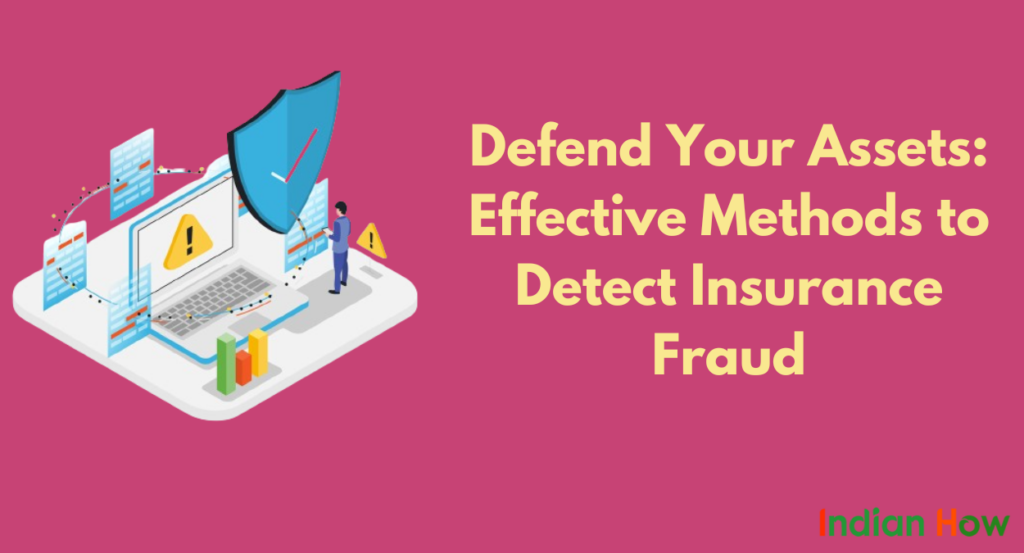Insurance fraud is a multi-billion dollar industry that affects millions of people worldwide. From exaggerated claims to staged accidents, fraudsters will go to great lengths to deceive insurance companies and pocket some easy cash. But fear not, dear reader, for in this comprehensive guide, we will delve deep into the world of insurance fraud detection, equipping you with the knowledge and tools necessary to defend your assets against these cunning criminals.

Understanding Insurance Fraud
Before we dive into the methods of detecting insurance fraud, let’s take a moment to understand what exactly we’re up against. Insurance fraud occurs when individuals or organizations deceive insurance companies for financial gain. This can take many forms, including:
- Falsifying information on insurance applications.
- Exaggerating the extent of damages or injuries.
- Staging accidents or events to make fraudulent claims.
- Colluding with healthcare providers or professionals to submit false claims.
These fraudulent activities not only cost insurance companies billions of dollars each year but also drive up premiums for honest policyholders. It’s a lose-lose situation for everyone except the fraudsters.
The Importance of Detection
Detecting insurance fraud is crucial for several reasons. Firstly, it helps protect the financial stability of insurance companies, ensuring that they can continue to provide coverage to legitimate policyholders. Secondly, it helps keep premiums affordable for everyone by preventing fraudulent claims from driving up costs. And lastly, it helps deter would-be fraudsters from attempting to deceive the system, knowing that their actions will not go unnoticed.
Effective Methods of Detection
Now that we understand why detecting insurance fraud is so important, let’s explore some effective methods for identifying fraudulent activity:
- Data Analytics: In today’s digital age, data analytics plays a crucial role in detecting insurance fraud. By analyzing vast amounts of data, insurance companies can identify patterns and anomalies that may indicate fraudulent behavior. For example, if an individual has a history of filing suspicious claims or if multiple claims are filed for similar accidents in a short period, it could raise red flags for further investigation.
- Surveillance: Sometimes, seeing is believing. Surveillance cameras and investigators can be deployed to monitor suspicious claimants and gather evidence of fraudulent activity. This could involve observing claimants engaging in physical activities that contradict their reported injuries or documenting evidence of staged accidents.
- Medical Records Review: Healthcare providers play a key role in detecting insurance fraud by reviewing medical records for inconsistencies or signs of manipulation. For example, discrepancies between reported symptoms and objective medical findings, frequent changes in treating physicians, or a history of seeking treatment for the same injury from multiple providers could all indicate potential fraud.
- Claims Investigation: Insurance adjusters are trained to investigate claims thoroughly, looking for any signs of fraud or deception. This could involve interviewing witnesses, inspecting property damage, or verifying the authenticity of documents submitted with the claim. By conducting a comprehensive investigation, adjusters can uncover fraudulent activity and prevent dishonest claimants from profiting illegally.
- Collaboration: Detecting insurance fraud often requires collaboration between insurance companies, law enforcement agencies, and other stakeholders. By sharing information and resources, these organizations can pool their expertise and leverage their collective power to combat fraud more effectively.
Challenges and Limitations
While these methods of detecting insurance fraud are undoubtedly effective, they are not without their challenges and limitations. For example, fraudsters are constantly evolving their tactics to evade detection, making it difficult for insurance companies to keep up. Additionally, privacy concerns and legal restrictions may limit the extent to which insurers can use certain investigative techniques, such as surveillance or data mining.
Furthermore, the sheer volume of insurance claims processed each day can make it difficult for insurance companies to identify fraudulent activity manually. This is where technology and automation can play a crucial role in streamlining the detection process and flagging suspicious claims for further review.
Also Read:
FAQs About Detect Insurance Fraud
Q: How common is insurance fraud, really?
A: Insurance fraud is more common than you might think. According to the Coalition Against Insurance Fraud, it costs insurers billions of dollars each year and accounts for a significant portion of all insurance claims filed.
Q: What are the consequences of committing insurance fraud?
A: The consequences of committing insurance fraud can be severe. In addition to facing criminal charges and potential jail time, individuals found guilty of insurance fraud may be required to pay hefty fines and restitution to the insurance company.
Q: Can’t insurance companies just handle fraud detection on their own?
A: While insurance companies have dedicated teams and resources for detecting fraud, collaboration with other stakeholders, such as law enforcement agencies and healthcare providers, is essential for combating fraud effectively.
Conclusion
In conclusion, detecting insurance fraud is a critical component of protecting the integrity of the insurance industry and safeguarding the financial interests of policyholders. By leveraging a combination of data analytics, surveillance, claims investigation, and collaboration, insurance companies can identify and prevent fraudulent activity before it has a chance to undermine the trust and stability of the system.